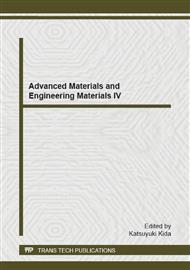p.284
p.288
p.293
p.297
p.302
p.309
p.315
p.319
p.323
Steady State Thermal Behaviour of Ceramic Wick Structure for Application in Two Phase Heat Transfer Devices
Abstract:
This work reports on results from two phase heat transfer devices assembled with ceramic capillary structure. It is firstly presented the manufacturing of the ceramic wick structures and afterwards the characterization of the morphological-and fluid-dynamical properties of these ceramic wick structures. As closing results, it is presented the thermal behaviour of two different two phase heat transfer devices, i.e. a Capillary Pumped Loop and a Loop Heat Pipe. The properties of the ceramic wick structure are within the desirable range for a correct functioning of these devices, e.g. porosity, pore size and permeability constants ranging from 40 to 60%, from 5 to 30μm and from 10-10 to 10-13m2, respectively. The thermal behaviour tests of the heat transfer devices used power heat load input in range from 10 to 20W and for all devices the evaporator temperature reached steady state condition. Thus, as a result, it can be claimed these ceramic wick structures as successful alternative for assembling capillary evaporator of CPL and LHP.
Info:
Periodical:
Pages:
302-308
Citation:
Online since:
December 2014
Keywords:
Price:
Сopyright:
© 2015 Trans Tech Publications Ltd. All Rights Reserved
Share:
Citation:


